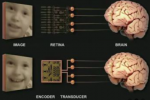Graduate Education
Weill Cornell Graduate School of Medical Sciences (WCGSMS)
For more than a half-century, WCGS has focused on preparing its students for careers in the biomedical sciences. The Graduate School faculty today numbers more than 250, and more than 1,000 students have earned Cornell University PhDs from the school.
Physiology, Biophysics and Systems Biology (PBSB)
The PBSB graduate program website includes exciting information about the research and academic activities of the Faculty engaged in world class research aiming to understand the functional mechanisms in the human body, in health and in disease.
Tri-I PhD Program in Computational Biology and Medicine (TPCBM)
The Tri-I PhD Program in Computational Biology and Medicine (CBM) was established in 2003 to provide a unique training opportunity that takes advantage of the exceptional educational and research resources of Cornell University in Ithaca, its Medical College in NYC (Weill Cornell Medical College), and Memorial Sloan Kettering Cancer Center. It is our belief that the development of such a cadre of computational biologists, trained in the laboratories of exceptional program faculty from all three campuses, will foster discovery in frontiers of basic biological and biomedical sciences.
Tri-Institutional PhD Program in Chemical Biology (TPCB)
The Tri-Institutional PhD Program in Chemical Biology was established in 2001 as one of the first graduate programs in the world to focus on research and training at the interface of chemistry and biology. The program is a collaborative offering of three premier New York City institutions, Weill Cornell Medical College, The Rockefeller University, and the Memorial Sloan Kettering Cancer Center. Located adjacent to one another in the heart of Manhattan’s Upper East Side, these three institutions combine to create a unique university environment and provide unparalleled scientific opportunities to the next generation of leaders in chemical biology.
Aksay Lab
The neural system studied by the lab is the integrator for control of eye position. Neurons essential for function, located either in the brainstem or cerebellum, are examined in vivo during normal behavior. The experimental preparation used is the developing zebrafish, allowing a combination of optical, genetic, and electrophysiological tools. Some examples of methods brought to bear are…
Nirenberg Lab
The theme of our research is to advance basic understanding of computational neuroscience, and, in parallel, use what we learn to address practical problems that improve quality of life.







